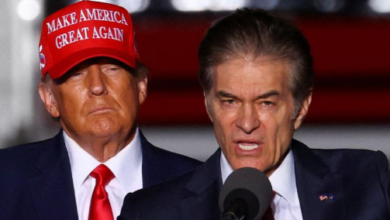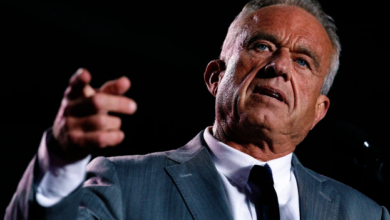Europe Facing Unprecedented Energy Crisis, Costs Are Unimaginable

It’s not just the United States feeling the heat this summer with high utility and gas bills. Our friends across the pond are sweating it out much worse than we are, and with winter just around the corner, that sweat might turn to frostbite if something doesn’t give soon.
What’s the biggest culprit for the stratospheric gas prices and looming gas shortage in Europe? The war in Ukraine.
With no real end in sight, Europe is facing a crisis they haven’t seen since the 1970s. So what does the future hold for Europe? Lots of cold and dark nights ahead from what I can tell.
NOT EVEN CLOSE: @TuckerCarlson says Europe’s energy crisis is proof we’re nowhere near replacing gas and oil. Link in bio. pic.twitter.com/OC2O5ThLVF
— Fox News (@FoxNews) August 30, 2022
RELATED: Media Claims Planet Earth ‘Wants’ High Gas Prices
Extreme Measures
Axios recently laid out some of the steps being taken in Europe to curb energy consumption leading up to the winter months. These steps were spurred by an agreement this past July between the 27 European Union nations to cut consumption by 15% between August and March of 2023.
Below are some of the steps being taken across the continent:
- Germany
- Public buildings and museums, including Cologne’s cathedral and the Brandenburg Gate in Berlin, will no longer be lit at night
- The hot water in Hanover has been cut off at public buildings
- Augsburg has turned off their traffic lights
- Spain
- Air conditioning can’t be set any cooler than 81 degrees Fahrenheit
- Suggesting workers not wear ties to preserve energy
- Italy
- Air conditioning in schools and public buildings is limited
Just think about that for a minute. Due to their energy crisis, European governments are limiting energy usage in public buildings, businesses, and even private residences.
Support Conservative Voices!
Sign up to receive the latest political news, insight, and commentary delivered directly to your inbox.
That is where we are in Europe right now; if you think the war in Ukraine doesn’t have global effects, it’s time to wake up and feel the heat.
Breaking: 3,000+ people demonstrated in Plauen, Germany against the government’s energy policy and the soaring gas and electricity prices that are set to take place in the fall 🚨
— Wall Street Silver (@WallStreetSilv) August 30, 2022
Sticker Shock
I often report on the rising cost of gas, natural gas, and diesel in the United States, but the cost in Europe is startling. European natural gas prices are ten times higher than the average over the last decade.
Over the last year, natural gas prices in the United States rose 165.5%.
In Germany in particular, costs are becoming simply unimaginable.
Germany power futures for next year surged above 1,000 euros for the first time 🇩🇪📈
💰 European power prices are smashing records basically every day as Russia curbs natural gas supply ahead of the winter
⚠️ German power is up 1,077% since last yearhttps://t.co/SENkwKpi6J pic.twitter.com/zxHdIoAsT5— Stephen Stapczynski (@SStapczynski) August 29, 2022
While energy costs in the summer tend to rise significantly in the United States, gas prices in Europe tend to increase in the winter. Alex Munton, an expert on global gas markets, explains:
“Things are [at] a crisis point. We have astronomic gas prices, and we’re still a few months away from when gas demand really peaks during the winter. There’s genuine uncertainty whether there will be sufficient gas to meet demand throughout the winter.”
For those unfamiliar, many European homes rely on gas to heat their homes. I spent some time living in Portugal and England, and both my homes were heated from a gas tank in my backyard that I had to pay to have filled when it would go empty.
When I lived in England around 2008, it would cost me about $600 to fill my home gas tank. Let that sink in for a moment.
RELATED: Electric Bills Skyrocket, Crippling Low Income Families With No End In Sight
The Kremlin is Not Worried
Many thought sanctions against Russia would cripple their economy and convince the Kremlin to back down and eventually retreat from Ukraine. But, unfortunately, like many others surrounding foreign policy and economics, that prediction hasn’t panned out.
Typically Russia supplies about 40% of the European gas imports. The Kremlin has done very well despite the sanctions and pushes to abort ourselves as an allied force from dependence on Russian gas.
In the first half of 2022, the Kremlin’s gas revenues have been two to three times greater than usual. In addition, I reported in June that the Russian ruble has been up 40% against the U.S. dollar since January. It should make all of us wonder what these sanctions are doing, if anything.
According to the consultant group Capital Economics, if gas prices stay current, Russian President Vladimir Putin can keep exports to Europe at 20% of normal levels for the next two to three years without feeling adverse effects on the Russian economy. There is even speculation that he could completely cut off natural gas to Europe entirely and be fine for a time economically.
If that thought brings chills to your spine, it should and could literally bring chills to Europeans in the next few months.
Zelenskyy tonight:
“If they want to survive, it is time for the Russian military to flee. Go home…If they do not listen to me, they will deal with our defenders, who will not stop until they liberate everything that belongs to Ukraine.”
Says they’re taking Crimea back, too.
— Angry Staffer 🌻 (@Angry_Staffer) August 29, 2022
No End in Sight
With this month ending, it appears we are about to step into month seven of a war that military experts claimed would be over in 72 hours. But unfortunately, it would appear that not only did we underestimate the Ukrainian’s people resolve, but we also underestimated the Russian government’s stubbornness.
This is shocking when history should’ve told us that Russia isn’t known for backing down easily. A case in point is the 900-day blockade of Leningrad in the 1940s.
However, there is some speculation that Russia might be amenable to a negotiated end to the war that allows them to retain Crimea and keep the Donbas region. Unfortunately for Putin and possibly more unfortunately for the rest of Europe, Ukrainian President Volodymyr Zelenskyy shows no signs of wanting to deal.
Zelenskyy views the only acceptable end to this war as a complete reclaim of lost territory, including Crimea. From what we can tell, that is also the only satisfactory end to this conflict from the United States perspective. The unfortunate reality is this is unlikely to happen.
RELATED: Biden State Dept. Refusing To Cooperate With Afghanistan Inspector General Review
Digging In
Barring a Russian regime change or military mutiny, both unlikely to occur, it looks like we are in the beginnings of a protracted conflict in eastern Europe. Added to the pile of evidence that Putin is in it for the long haul, he just ordered an increase of his military by 137,000 men next year.
That will put his military at 1.15 million soldiers. As senior policy researcher at Rand Corporation, Dara Massicot says:
“This is not a move that you make when you are anticipating a rapid end to your war.”
It’s shaping up to be an icy European winter.
Now is the time to support and share the sources you trust.
The Political Insider ranks #3 on Feedspot’s “100 Best Political Blogs and Websites.”
[ad_2]
Source link





